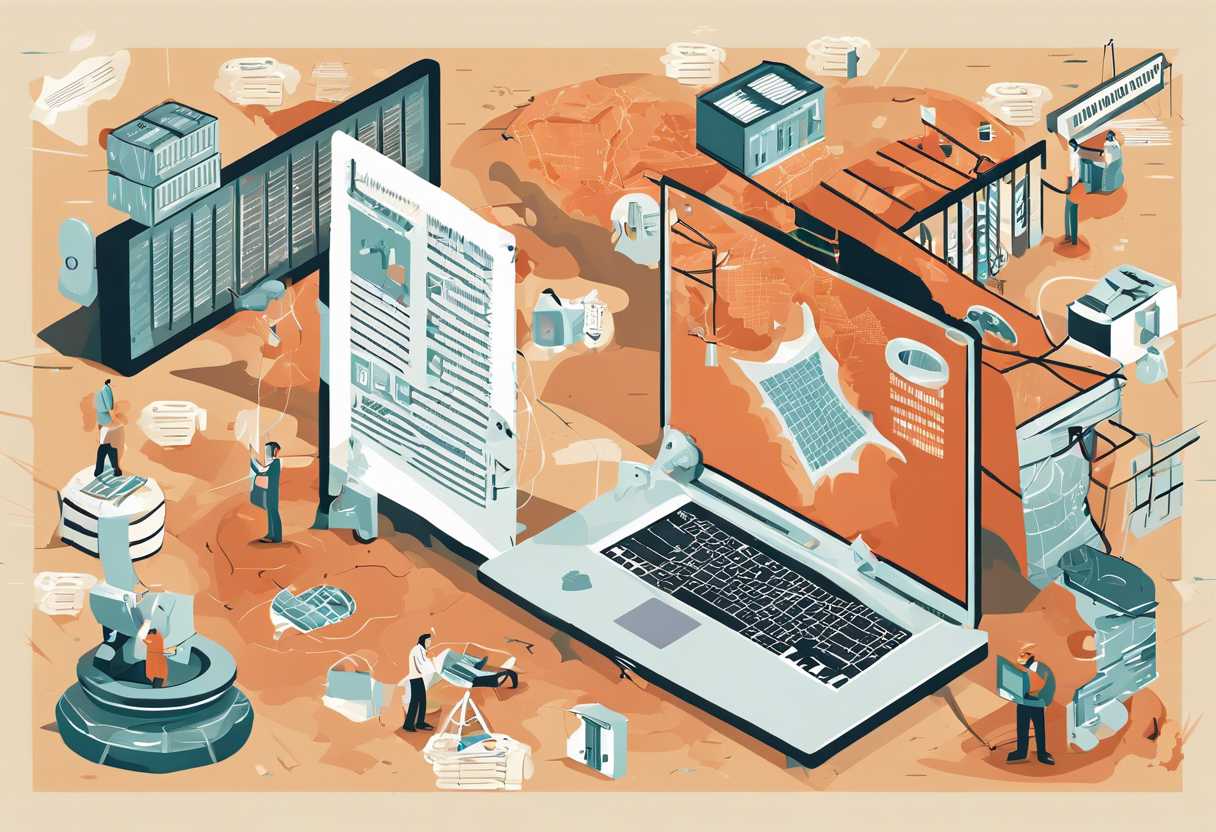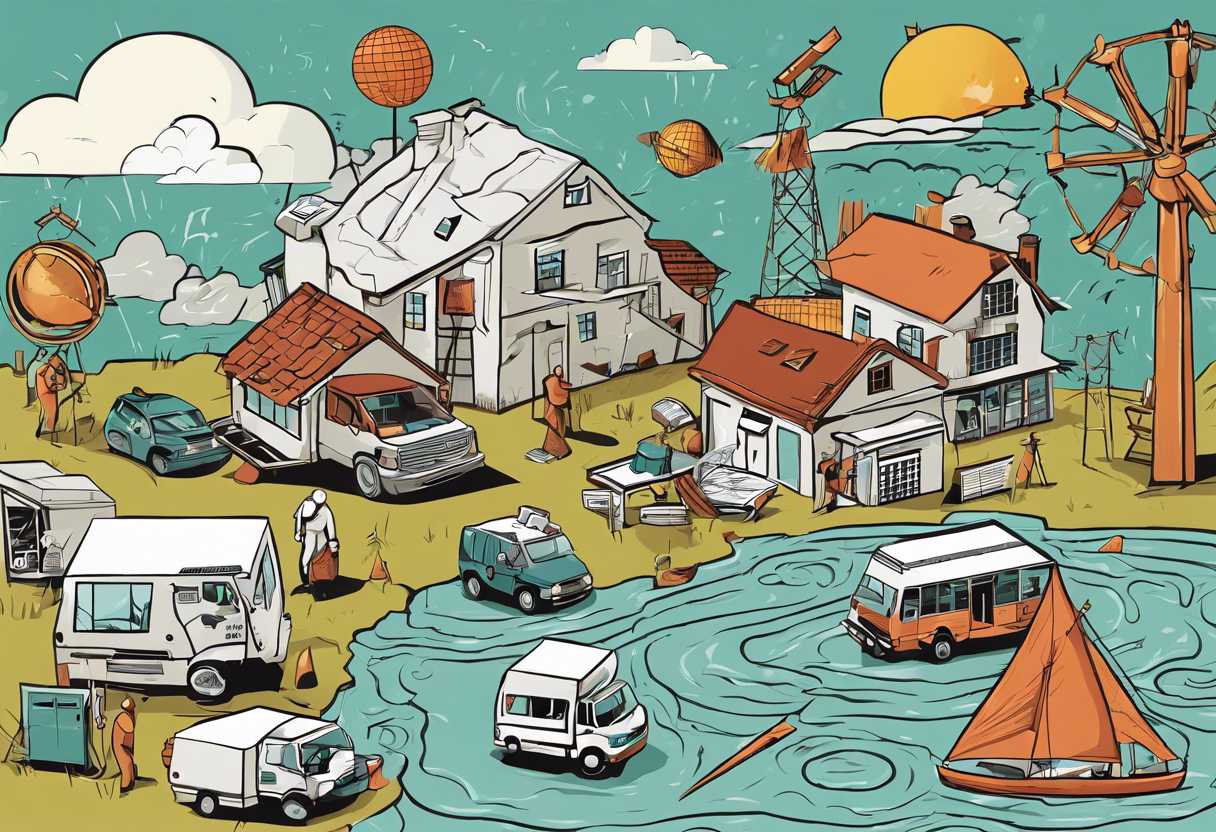Disaster risk evaluation is a multifaceted process that involves assessing the likelihood and impact of potential disasters. It requires a deep understanding of various factors, including the role of data and technology, as well as the challenges and complexities involved in the assessment. In this blog post, we will delve into the intricacies of evaluating disaster risk, exploring the challenges, the role of data and technology, and the factors that influence the complexity of the evaluation. Additionally, we will discuss strategies for enhancing the accuracy of disaster risk analysis. Understanding the multifaceted nature of disaster risk evaluation is crucial for effective disaster preparedness and response.
Understanding the Multifaceted Nature of Disaster Risk Evaluation
The Importance of Comprehensive Risk Assessment
Disaster risk evaluation is a critical component of disaster management and preparedness. It involves the systematic analysis and assessment of potential risks and vulnerabilities that a community or organization may face in the event of a disaster. This process is essential for identifying and understanding the multifaceted nature of disaster risk, including natural hazards, social vulnerabilities, and exposure to potential impacts.
Factors to Consider in Disaster Risk Evaluation
When conducting a disaster risk evaluation, it is important to consider a wide range of factors that can contribute to the overall risk profile of a community or organization. These factors may include geographical location, climate patterns, population density, infrastructure resilience, and socio-economic conditions. By taking a comprehensive approach to risk evaluation, stakeholders can gain a more nuanced understanding of the complex interplay of factors that contribute to disaster risk.
Tools and Techniques for Effective Risk Evaluation
There are various tools and techniques available for conducting effective disaster risk evaluation. These may include hazard mapping, vulnerability assessments, risk modeling, and scenario analysis. By utilizing these tools, stakeholders can gain valuable insights into the potential impacts of different disaster scenarios and develop targeted strategies for risk reduction and mitigation. Additionally, the use of advanced technologies such as geographic information systems (GIS) can enhance the accuracy and precision of risk evaluation processes.

Challenges in Assessing the Likelihood and Impact of Disasters
Uncertainty in Predicting Natural Disasters
One of the biggest challenges in assessing the likelihood and impact of disasters is the inherent uncertainty in predicting natural events. While advancements in technology and data analysis have improved our ability to forecast disasters, there are still limitations in accurately predicting the timing, location, and magnitude of events such as earthquakes, hurricanes, and tsunamis. This uncertainty makes it difficult for governments, organizations, and communities to adequately prepare and respond to potential disasters.
Complexity of Human-Made Disasters
Assessing the likelihood and impact of human-made disasters, such as industrial accidents, terrorist attacks, and cyber-attacks, presents its own set of challenges. Unlike natural disasters, human-made events are often the result of intentional actions or negligence, making them more difficult to predict and prevent. Additionally, the interconnected nature of modern society means that the impact of human-made disasters can be widespread and multifaceted, affecting critical infrastructure, public safety, and the economy.
Need for Comprehensive Risk Assessment
Addressing the challenges of assessing disaster likelihood and impact requires a comprehensive approach to risk assessment. This involves gathering and analyzing data from a variety of sources, including historical records, scientific models, and expert opinions. By integrating information on the probability of different types of disasters occurring with their potential consequences, decision-makers can better understand the overall risk landscape and prioritize mitigation and preparedness efforts. Additionally, ongoing monitoring and evaluation are essential for updating risk assessments and adapting strategies to changing conditions.

The Role of Data and Technology in Disaster Risk Assessment
Utilizing Big Data for Predictive Analysis
Big data plays a crucial role in disaster risk assessment by providing valuable insights into historical patterns and trends. By analyzing large volumes of data, such as weather patterns, geological data, and population demographics, experts can identify potential risk factors and predict the likelihood of future disasters. This predictive analysis allows for proactive measures to be taken, such as implementing early warning systems and developing disaster response plans.
Integration of Geographic Information Systems (GIS)
GIS technology is instrumental in disaster risk assessment as it allows for the visualization and analysis of spatial data. By mapping out vulnerable areas, such as floodplains or earthquake zones, and overlaying this information with demographic data, emergency responders can better understand the potential impact of a disaster and allocate resources accordingly. GIS also enables the identification of evacuation routes, emergency shelters, and critical infrastructure, enhancing preparedness and response efforts.
Remote Sensing and Real-Time Monitoring
Remote sensing technologies, such as satellite imagery and drones, provide real-time data on environmental conditions and changes. This data is invaluable for monitoring natural hazards, such as wildfires, hurricanes, and landslides, and assessing their potential impact on communities. By leveraging remote sensing technology, disaster risk assessment can be continuously updated and refined, allowing for adaptive and dynamic response strategies.
Factors Influencing the Complexity of Disaster Risk Evaluation
Geographic and Environmental Factors
One of the key factors influencing the complexity of disaster risk evaluation is the geographic and environmental characteristics of a region. Areas prone to natural disasters such as earthquakes, floods, or hurricanes require a more comprehensive evaluation due to the higher level of risk. Additionally, the topography, soil composition, and climate of a region can also impact the potential for disasters, making the evaluation process more intricate.
Socioeconomic and Demographic Factors
Another significant factor contributing to the complexity of disaster risk evaluation is the socioeconomic and demographic makeup of a population. Factors such as poverty levels, access to resources, and population density can all influence the vulnerability of a community to disasters. Evaluating these factors requires a deep understanding of the social and economic dynamics of a region, adding complexity to the risk assessment process.
Infrastructure and Technological Factors
The state of infrastructure and technological capabilities in a region also play a crucial role in determining the complexity of disaster risk evaluation. The quality of buildings, transportation networks, and communication systems can impact the potential impact of a disaster. Additionally, the level of technological advancement and access to early warning systems can influence the accuracy of risk assessments. Evaluating these factors requires a detailed analysis of the built environment and technological infrastructure, adding layers of complexity to the evaluation process.
Strategies for Enhancing the Accuracy of Disaster Risk Analysis
Utilizing Advanced Technology
One of the most effective strategies for enhancing the accuracy of disaster risk analysis is to utilize advanced technology. This includes the use of geographic information systems (GIS), remote sensing, and satellite imagery to gather and analyze data. These technologies allow for the collection of real-time data, which can provide a more accurate picture of the current risk landscape. Additionally, advanced technology can help to identify and map vulnerable areas, allowing for more targeted risk analysis and mitigation efforts.
Integration of Multiple Data Sources
Another key strategy for enhancing the accuracy of disaster risk analysis is the integration of multiple data sources. By combining data from various sources such as government agencies, academic institutions, and non-governmental organizations, a more comprehensive and accurate understanding of risk factors can be achieved. This can include data on population density, infrastructure, environmental factors, and historical disaster events. By integrating these diverse data sources, a more holistic view of disaster risk can be obtained, leading to more accurate analysis and decision-making.
Implementing Robust Quality Control Measures
Implementing robust quality control measures is essential for ensuring the accuracy of disaster risk analysis. This includes rigorous validation and verification processes to ensure the accuracy and reliability of the data being used. Quality control measures can also involve the use of standardized methodologies and best practices to ensure consistency and accuracy in analysis. By implementing these measures, the reliability of the risk analysis can be significantly enhanced, leading to more informed decision-making and more effective risk mitigation strategies.
Conclusion
As we have explored in this blog post, the complexity of evaluating disaster risk is a multifaceted challenge that requires a comprehensive understanding of various factors. From the challenges in assessing the likelihood and impact of disasters to the role of data and technology in risk assessment, it is evident that accurate evaluation is crucial for effective disaster preparedness and response.
Factors such as the dynamic nature of disasters, the availability and quality of data, and the influence of socio-economic and environmental variables contribute to the complexity of disaster risk evaluation. However, by implementing strategies such as integrating diverse expertise, leveraging advanced technology, and enhancing data collection and analysis, the accuracy of risk assessment can be improved.
It is essential for stakeholders, including government agencies, non-governmental organizations, and communities, to collaborate and prioritize the adoption of innovative approaches to disaster risk evaluation. By doing so, we can better understand, anticipate, and mitigate the impact of disasters, ultimately saving lives and minimizing the socio-economic consequences.
As we continue to navigate the evolving landscape of disaster risk, it is imperative to remain proactive and committed to enhancing our capabilities in evaluating and managing these complex challenges. By staying informed, advocating for sustainable practices, and investing in resilient infrastructure, we can collectively work towards a safer and more secure future for all.
Thank you for reading and joining us in this important conversation on the complexity of evaluating disaster risk. Together, let us strive to build a more resilient and prepared society.

